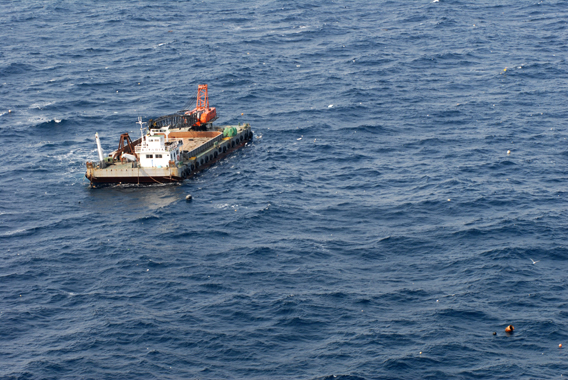The U.S. Navy released pictures showing widespread damage in Japan following last week’s 9.0-magnitude earthquake and accompanying tsunami.
2011 Tōhoku earthquake was the strongest on record in Japan. It was the fifth most powerful quake since record-keeping began more than 100 years ago.
The quake caused tens in billions in damages, leaving hundreds of thousands homeless and triggered a nuclear meltdown. More than 10,000 are feared dead.

MISAWA, Japan (March 15, 2011) Mineman Seaman Jerad Clymer, from Houston, assigned to Naval Air Facility Misawa, removes debris from a park at the Misawa Fishing Port. (U.S. Navy photo by Mass Communication Specialist 2nd Class Devon Dow/Released)

MISAWA, Japan (March 15, 2011) Aviation Electronics Technician 1st Class Steven Stone, from Daytona Beach, Fla., assigned to Naval Air Facility Misawa, removes fishing line from a tree during the second day of cleanup at the Misawa Fishing Port. More than 120 Sailors and Airmen from Naval Air Facility Misawa are assisting Misawa City workers and members of the community in relief efforts. (U.S. Navy photo by Mass Communication Specialist 2nd Class Devon Dow/Released)

PACIFIC OCEAN (March 14, 2011) Debris is seen adrift in the Pacific Ocean off the coast of Japan. Sailors aboard the guided-missile destroyer USS Curtis Wilbur (DDG 54), not pictured, are inspecting debris fields for victims of the 9.0 magnitude earthquake and subsequent tsunami that struck northern Japan. Curtis Wilbur is part of the Ronald Reagan Carrier Strike Group off the coast of Japan providing assistance to Japan as directed in support of Operation Tomodachi. (U.S. Navy photo by Chief Intelligence Specialist Michael Rouse/Released)

MIYAGI PREFECTURE, Japan (March 14, 2011) Naval Air Crewman 3rd Class Garrett Krygier, assigned to the Chargers of Helicopter Anti-Submarine Squadron (HS) 14, surveys the destruction caused by a 9.0 magnitude earthquake and subsequent tsunami that struck northern Japan March 11th. HS-14, based at Naval Air Facility Atsugi, Japan, is conducting search and rescue missions in Miyagi Prefecture in support of Operation Tomodachi. (U.S. Navy photo by Mass Communication Specialist 1st Class Ben Farone/Released)

PACIFIC OCEAN (March 13, 2011) A Japanese barge is seen adrift in the Pacific Ocean. (U.S. Navy photo by Mass Communication Specialist 3rd Class Dylan McCord/Released)

PACIFIC OCEAN (March 13, 2011) Naval air crewmen assigned to the Black Knights of Helicopter Anti-Submarine Squadron (HS) 4 inspect debris drifting in the Pacific Ocean from an 8.9 magnitude earthquake and subsequent tsunami that struck northern Japan. (U.S. Navy photo by Mass Communication Specialist 3rd Class Dylan McCord/Released)

PACIFIC OCEAN (March 13, 2011) An aerial view of debris from an 8.9 magnitude earthquake and subsequent tsunami that struck northern Japan. The debris was inspected by a helicopter-based search and rescue team from the aircraft carrier USS Ronald Reagan (CVN 76). (U.S. Navy photo by Mass Communication Specialist 3rd Class Alexander Tidd/Released)
Related articles
Before-and-after tsunami satellite pictures
(03/15/2011) Google released satellite images revealing the devastation caused by the March 11 tsunami in Japan.
Japan’s earthquake disaster may boost rainforest logging in Borneo
(03/13/2011) Malaysian loggers say Japan’s recovery from last week’s devastating earthquake and tsunami will boost demand for rainforest timber, reports the Borneo Post.
Is Japan’s tsunami linked to climate change?
(03/11/2011) Could the earthquake that triggered Japan’s devastating tsunami be linked to climate change? The short answer is probably not, but recent research suggests that changing climate has the potential to influence earthquakes in some parts of the world














